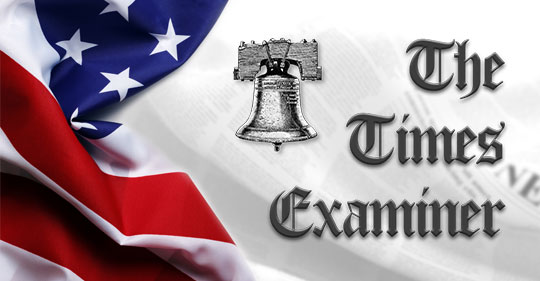
Revenue Tariffs, Protective Tariffs, and Reciprocal Tariffs
Tariffs were the main source of Federal Government revenue until the 1913 Revenue (Underwood) Act lowered the tariff rate from an average 40 percent to an average of 27 percent and introduced very low corporate and individual income taxes. Individuals making over $3,000 per year paid only one to six percent, and in 1913, this only applied to three percent of the population. The corporate tax was only one percent. With expanded concepts of government responsibility and spending, these rates drifted higher with wars and more liberal social spending in later years. War has an inflationary and disrupting effect on Federal spending and monetary inflation, which often persists in following years. President Woodrow Wilson, who had campaigned for tariff and tax reform in 1912, signed the Act into law on October 3, 1913.
In the 19th Century, low tariffs that did not disrupt trade were considered Revenue tariffs, generally below 15 percent of the value of imported goods. Higher tariffs, especially 20 percent or more were considered Protective tariffs. Protective tariffs allowed the profitability and growth of industry considered critical to national prosperity and security. While Protective tariffs are often necessary to sustain and increase the production of materials and industry critical to national defense—such as steel, aluminum, and defense related technologies—the impact on consumers and other commerce, especially exporters, is inflationary to the cost of living and doing business. In the case of exporters, it is also detrimental to revenue volume. President Trump’s concept of Reciprocal tariffs is essentially a temporary Retaliatory tariff with the objective of correcting trade balances and ensuring Fair Trade practices. In Trump’s case it is also related to reciprocal cooperation in controlling illegal immigration. Nevertheless, correcting the system can be temporarily painful to consumers and businesses that experience the resultant price inflation.
The Tarriff Act of 1789 was the second bill signed by President Geroge Washington. It placed a 5 percent tariff on almost all imported goods. The average had risen to about 12.5 percent by 1812. It was doubled to 25 percent during war with Britian that lasted from 1812 to February 1815. This 25 percent tariff not only helped finance the war but resulted in a substantial increase in industrial profitability and development, principally in Northern states.
The Tariff of 1816 sought to continue the high profitability of protectionist tariffs to American manufacturing of which about 80 percent was in Northern states. The South remained primarily an agricultural exporter, especially of cotton and tobacco. The Tariff of 1816 maintained protectionist rates of 25 to 30 percent on dutiable items and increased dutiable items from about 50 percent to 80 percent. The effective tariff rate on the economy rose from about 6.5 percent to over 20 percent.
By 1860, approximately 95 percent of Federal government revenues came from tariffs. There was no Federal income tax in the United States in 1860. Land sales accounted for most of the rest. Tariffs, collected at entry ports, had the advantage of being easier to collect than individual income or property taxes. Their disadvantage to cost-effective government, however, was that they were an invisible tax burden on a largely unwary electorate.
Henry Clay (1777-1852) was one of the most influential men in American history. A brilliant Kentucky lawyer, gifted negotiator and politician, and skilled orator, Clay served three times as Speaker of the U.S. House, and twice represented Kentucky in the U.S. Senate. He ran for President in 1824. He lost but was appointed Secretary of State by John Quincy Adams. He founded the Whig Party and ran for President again in 1832 and 1844, losing both times. He continued to dominate the Whig Party and spent the last three years of his life as a Whig political leader and U.S. Senator. He is best known for advocating his American System of Economics, which included a strong national bank (and fiat printed money), corporate business and industrial subsidies to promote growth, and especially, high protective tariffs, favoring manufacturing over agricultural and other commercial interests. The American system was basically big government intervention into the economy to spur growth. It differed significantly from a classical free market system driven by free price movements to adjust supply and demand. History has proved that free markets and free trade are far better creators of growth than government intervention. Nevertheless, government systems of intervention have a powerful appeal to ambitious politicians and voters with little knowledge or understanding of basic economics.
One of Henry Clay’s most powerful legacies was his influence on Abraham Lincoln. Lincoln was a loyal admirer of Henry Clay, and as the Whig leader of Illinois, called Clay “my ideal of a great man.” Unfortunately, his devotion to Clay’s American System of Economics left a wide path of unanticipated economic hindrance and destruction for many decades.
While protectionist tariffs benefit selected industries or commercial interests, they punish everybody else. The higher prices charged by protected business interests are passed on to consumers and other businesses whose purchasing power and standard of living are thus lowered. Their reduced purchasing power reduces demand for consumer products and negatively impacts employment demand.
Protectionism is particularly hard on exporters. Besides their direct effect on the cost of doing business, tariffs negatively impact the exchange rate at which exports can be exchanged for products burdened with increased tariffs. In effect, not only are the exporters’ costs at home increased, but they are also likely to get less for their product on exchange. Furthermore, exporters often face retaliatory tariffs that result in lost business and even lost markets. The Confederate Constitution outlawed protective tariffs, and the Confederate Congress set a free-trade course.
Mark Thornton and Robert B. Ekelund Jr. in their 2004 book on the economics of the Civil War, summarize some of their general economic conclusions. Protective tariffs benefit some commercial or regional interests in the short to intermediate term, but they do more harm than good to the overall economy. Obviously, some interests are injured. Tariffs are essentially a redistribution of wealth through political means. Protected economic interests often become non-innovative drags on the economy and taxpayers.
In a 2006 study using mathematical regression analysis, Douglas Irwin analyzed the impact of the 30 percent average tariff during the year 1885. He found that protected industries were not able to increase their profits by the full 30 percent because the higher prices caused by the tariff increase also increased their costs. Their net profit increase through government protection was thereby reduced to about 15 percent, which explains why they kept crying for still higher tariffs. On the other side of the coin, the tariff reduced exporter profits by about 11 percent. The total redistribution of income across commercial interests and regions was a whopping 9 percent of total GDP (Gross Domestic Product). Most consumers, however, were not directly involved in importing or exporting goods, so their economic loss was less visible, and politicians were able to favor special commercial interests with minimal impact at the polls.
Henry Clay’s strongly protectionist 1824 Tariff increased average dutiable rates from about 25 percent to 35 percent. Southern protest was so strong that the state legislatures of five of eight Southern states passed resolutions declaring it unconstitutional, and the South Carolina Legislature added that Henry Clay’s “American System” of tariffs and corporate subsidies was “a system of robbery and plunder” that “made one section tributary to another.” The 1824 Tariff resulted in painful increases in the cost of living and doing business in Southern states and severely reduced Southern export business. South Carolina’s export business dropped 25 percent over the next two years. Yet the tragic suffering imposed on the South by the 1824 Tariff was ignored by the Northern special interests that dominated Congress. Higher tariffs meant bigger profits to them.
In 1828, another tariff bill was passed, which was so overbearing and unjust that it is known in history as the Tariff of Abominations. The average dutiable rate was raised to approximately 50 percent and about 70 percent of goods were classified as dutiable, thus raising the average effective rate on the economy to about 35 percent, the highest in history to that point. The original impetus was that Northern textile manufacturers believed they needed greater protection, but the bill became a comprehensive bribery scheme to win the votes of Middle and Western states in the presidential election. When the Tariff of 1832 did not give the South significant relief, the Nullification Crisis erupted in South Carolina. Southern reaction to the 1824, 1828, and 1832 tariffs should have been adequate warning that passing the Morrill Tariff in 1860-61 could lead to Southern secessions.
In 1860, Southern states already paid 83 percent of Federal tariff revenues, while receiving less than 25 percent of Federal expenditures. In 1860, the South accounted for almost 82 percent of U.S. export business. Over 58 percent was from cotton alone
The Morrill Tariff, named for Justin Morrill, Vermont Republican and steel manufacturer, was a shamelessly partisan protectionist tax bill submitted to the House Ways and Means Committee during the 35th Congress in 1858. The object of its astonishing 67 percent increase in import tariff burdens was to allow protected U.S. industries to raise their prices and enjoy the resulting benefit of substantially increased profits without significant price competition from abroad. This tariff was so unjust in its impact on consumers, agricultural interests, exporters, and especially the Southern cotton-producing states, that it became a major provocation and economic incentive to Southern secession, when it finally passed the House on May 10, 1860.
Abraham Lincoln essentially won the 1860 Republican Primary by pushing passage of the Morrill Tariff, which finally passed the Senate on March 2, 1861. Lincoln strongly endorsed enforcement of the new tariff in his March 4, 1861, inauguration speech. This was the culmination of 45 years of domestic tariff wars from 1816 to 1861, with the South suffering even more from 1865 to 1913. The Confederate Constitution called for low tariffs of 10 to 15 percent. Most people are taught in school that the Civil War was primarily about slavery. Slavery was certainly an issue but not in the sense and degree generally assumed. The Morrill Tariff and anticipation of continued Northern domination of political, economic, and tax policy left the cotton-producing states little choice but secession.
In fact, Lincoln’s chief economic adviser, Henry Carey, wrote House speaker, Schuyler Colfax in March 1865, that the Civil War was caused by Southern interest in British Free Trade. British newspapers frequently referred to the war as a “tariff war.”
Continued high tariffs after the war kept the South relatively impoverished for generations.
The history of American tariff policy has generally been one of unsound politics overriding sound economics.
In June17, 1930, near the beginning of the Great Depression, Congress passed the highest tariff bill in U.S. history, the Smoot-Hawley Act. Although an overwhelming majority of Republicans in Congress supported it, President Herbert Hoover signed it reluctantly. Its stated purpose was to protect suffering American workers, farmers, and businesses from foreign competition. Until then, exporters were faring well and remained a relative strength in the economy. The House passed the bill 264 to 147, with 244 Republicans and 20 Democrats voting for it. The Senate passed it 44 to 42, with 39 Republicans and 5 Democrats voting for it. As could have been predicted by historical experience, exports soon suffered, dropping 61 percent, and even Canada introduced a retaliatory tariff against U.S. goods. Unemployment was at 7.8 percent when Smoot-Hawley passed and jumped to 16.3 percent in 1931 and peaked at 25.1 percent in 1933. Republicans had not yet learned their Free Market and Free Trade lessons. Protectionist tariffs are generally harmful to economic growth and are essentially a political means of redistributing regional and commercial wealth.
The Trump Administration is right in taking measures to correct abusive foreign trade practices and ensure fair and balanced trade. However, a cautionary review of the dangers and disparate sectional and commercial consequences of high-tariff dependence is needed to minimize pain and ensure sound economic and tax policies for the future.









 Mike Scruggs is the author of two books: The Un-Civil War: Shattering the Historical Myths; and Lessons from the Vietnam War: Truths the Media Never Told You, and over 600 articles on military history, national security, intelligent design, genealogical genetics, immigration, current political affairs, Islam, and the Middle East.
Mike Scruggs is the author of two books: The Un-Civil War: Shattering the Historical Myths; and Lessons from the Vietnam War: Truths the Media Never Told You, and over 600 articles on military history, national security, intelligent design, genealogical genetics, immigration, current political affairs, Islam, and the Middle East. 


